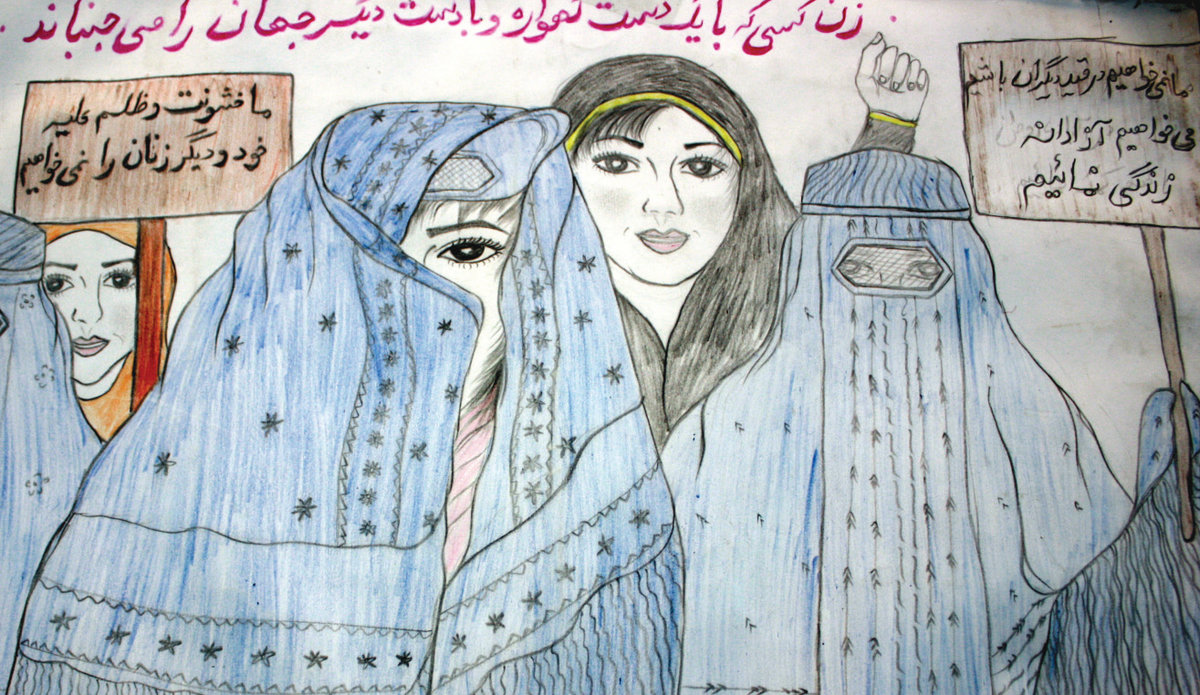In art competition, Afghan youth draw against violence
KABUL - Afghan students graphically depicted violence against women, including the negative physical, psychological and social effects, in a week-long drawing competition that culminated in a February awards ceremony attended by dozens of people in the north-eastern province of Kunduz.
The United Nations-supported event included some 40 participants between the ages of seven and 20, and involved the exhibition of roughly 60 drawings, all highlighting the consequences of various forms of violence against women, including battering, chemical assault, the practice of “baad” (giving away a woman or girl to settle a dispute), verbal abuse and forced labour.
“Violence against women is a serious problem in our community; we need to address it,” said the winner of the contest, Jawid Ranjbar, age 20. “I am glad to be able to express my opinion on the issue by participating in this contest.”
Similar sentiments were expressed by the first and second runners-up, -18year-old Shila Muradi and -15year-old Mursal Ibrahimi.
The contest, open to the public, was organized by the UN Assistance Mission in Afghanistan (UNAMA) with the Afghan Civil Society Forum, the provincial Department of Women’s Affairs (DoWA) in Kunduz and the Afghanistan Independent Human Rights Commission.
“The number, the quality and the amount of thought behind each work submitted was impressive,” said Diloro Kadirova, a UNAMA Human Rights official based in Kunduz, noting that UNAMA now will reproduce and disseminate some of the best art from the competition along with relevant articles of Afghanistan’s Elimination of Violence against Women (EVAW) law.
“The objective of this competition is to improve the awareness and understanding of the EVAW law,” said Ms. Kadirova. “We hope this initiative will further the understanding and the application of the law among the general public and the authorities of the region.”
In her remarks at the awards ceremony, the acting head of DoWA Kunduz, Nahid Asifi, said her office will continue to monitor cases of violence against women “tirelessly” and will work with authorities to protect women. “It is a long road ahead, but we must not give up,” she said.
According to Ms. Asifi, during the Afghan year 1393 (ending 20 March), her office registered more than 80 cases of violence against women, which she said represents only the “tip of the iceberg,” as many incidents remain unreported due to cultural and social stigma.
In 2009, Afghanistan enacted the EVAW law, which criminalizes 22 acts of violence against women, including rape and beating, and specifies punishment for perpetrators.
UNAMA’s latest report on the EVAW law, released in December 2013, found that Afghan authorities registered more cases of violence against women in 2013, but the number of prosecutions and convictions remained low, with most cases settled by mediation.
 UN
UN







